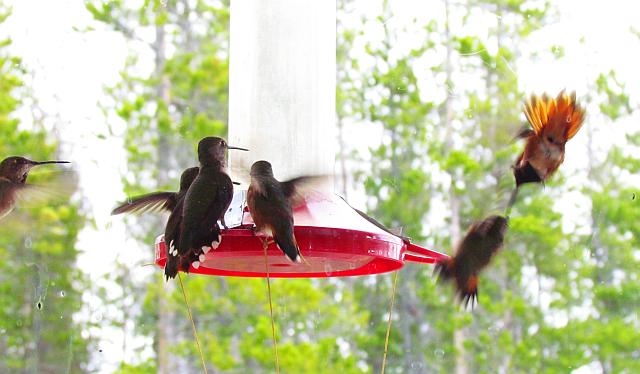Hummingbirds are exclusive to the Americas, North, Central and South. (There are birds with similar habits in Africa, but they are bigger and not related.) There are many species – the smallest weighs the same as six aspirins. I first saw them at 16,000 feet, above the treeline, in Peru, then feeding on wild, purple-flowered fuchsia bushes that cascaded by a mountain stream, bowed down by snow, in Chile.
Two species come to Ginty Creek, the commonest is the Rufous.
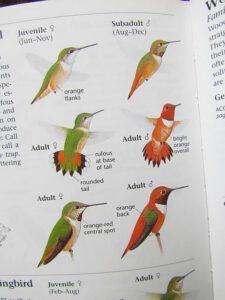
I include this page from Sibleys Field Guide to Birds of Western North America, because my photos cannot show the colouring of these amazing birds. Sibleys can’t do the colours justice either, because they are irridescent – that is, they often look black until the sun catches them. The best photo I have to show the irridescence is unfortunately on a specimen that was close to death – it died a few moments later.
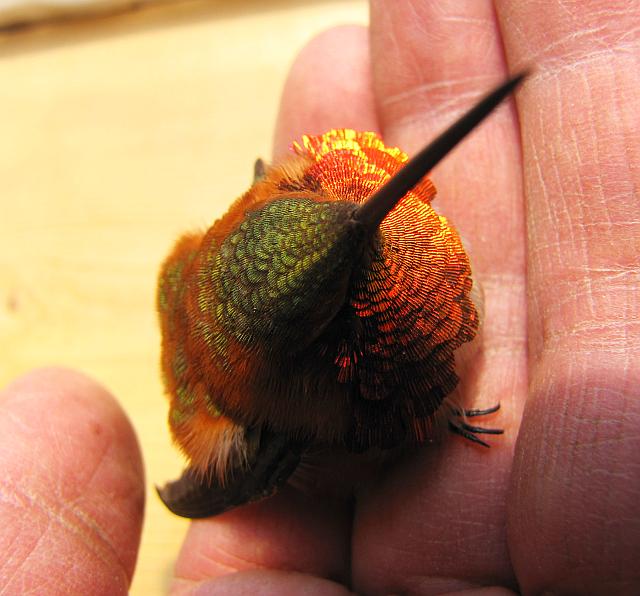
Here is a male on a branch flexing his wings.
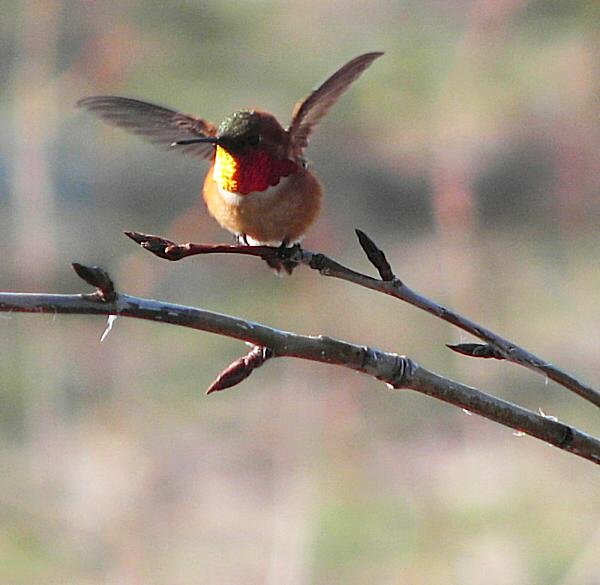
These birds are extraordinary in many ways. Their wings do not behave like those of other birds because of a specialized shoulder joint. When in flight, the wings are a blur to human eyes, but slow photography show them to move in a figure of eight, which enables the birds to hover and fly backwards – the only bird able to do this.
Their hearts beat 1000 times a minute. They must eat every 20 minutes to survive although they can go into a sort of torpor to survive the cold nights. They are at the feeder at very first light – often their sugar-water is frozen.
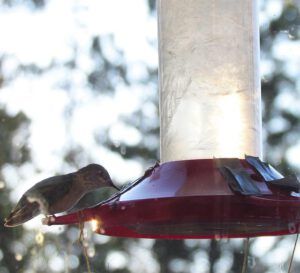
Despite their apparent tenuous hold on life, eastern species can migrate from Costa Rica to New York in FOUR DAYS!
As well as the loud hum made when they are flying, males can adjust their feathers to make a ringing buzz. Each species has a special flight pattern when courting females. The Rufous zooms down in a ringing kamikaze flight and whizzes back and forth over a female who is standing quietly on the ground near a bush. The hormones are so strong, they will display to sparrows and even pine cones.
The most entertaining thing about them as far as I am concerned is the way they fight! Eight or nine are visiting my feeder right now – sometimes all at once. (Locals tell me that once the young hatch there may be 30 birds vying for a drink but I am always in the mountains at Nuk Tessli at that time.)
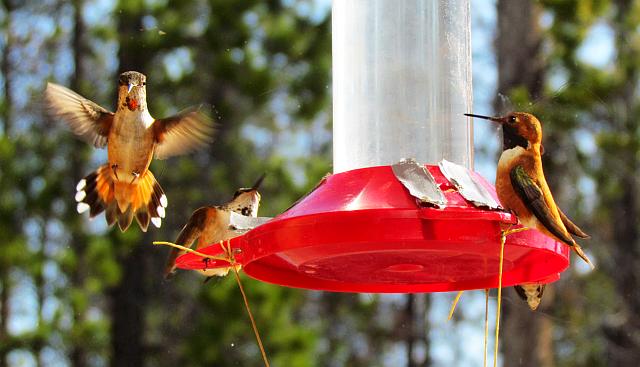
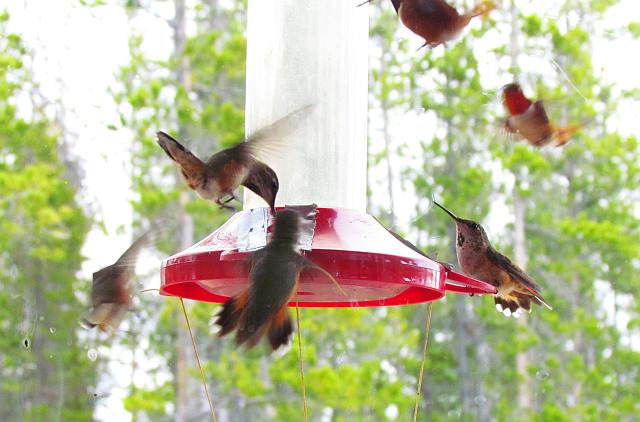
They are like bees around a honey pot but with much louder buzzes. When I go and replace the feeder (which they empty within a day) they will whizz within inches of my face.
